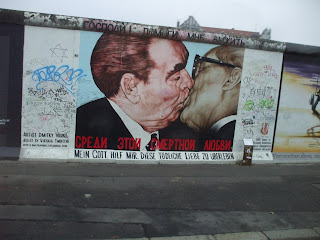Berlin, Berlin – so good they named it.....once! Yes, ok, it doesn’t quite have the same ring to its name as New York, but seriously, Berlin is one of Europe’s most fabulous cities. For me, Berlin is Europe’s equivalent of New York. It’s got that buzz about it: there’s always something going on, the city’s landscape is a constantly changing melting pot of architectural styles and there’s the shadow of the city’s recent history, too. Just like New York, Berlin is the kind of city that you could go back to again and again and yet see something different each time.
So how to condense this wonderful city into just one blog post? Well, pick out some of its many unsung highlights of course! Your first visit will be all about soaking up the atmosphere and seeing the main sights, but I can guarantee that you’ll want to go back again. Therefore, here are just a few ideas for visits you might want to make on your second, or even third, visit to the city;
Kaffee und Kuchen at the Reichstag
OK, so the Reichstag is somewhere that you’ll definitely want to visit on your first trip to Berlin; its amazing Lord Norman Foster designed glass dome perched high on its roof was enough to make me fall in love with it on my first visit. But if you’ve already done the Reichstag, how can you do it again and make it different? Well, one idea is to go once in the daytime and again in the night time; I can promise you that the view will be quite different, yet equally spectacular, both times! But another way of differentiating your trip and making is a bit different is to take Kaffee und Kuchen on the roof! Just like a German version of high tea, you’ll be led into elegant surroundings and served elegant cake to match; there’s even gluten free cake for those who need it! What could be more wonderful than looking out over Berlin with a slice of cake and a cup of coffee in hand? Fabulous!
Kaffee und Kuchen in the Reichstag!
The Secret Nuclear Bunker at the Story of Berlin Museum
There’s evidence of Berlin’s recent cold war history all over the city. You may be walking away from the totally modern Sony Centre at Potsdamer Platz when you come across a section of the Berlin Wall, or you may see one of the many mosaic murals which are a left over piece of communist history, and of course, there’s also the imposing Fernsehrturm to remind us of the hold that the Soviets had over the east of the city. But if you want to experience the cold war from a Western Sector point of view, a visit to the Nuclear Bunker which forms part of the Story of Berlin Museum could be just the ticket. Cold, dark, damp and rather eerie, you’ll be led down the stairs to this underground hiding place – built to house West Berliners if the city ever came under nuclear attack – and led around the complex with an English speaking guide. Very interesting, but not somewhere you’d want to spend your whole holiday, that’s for sure!
Inside the very dark Nuclear Bunker!
Schloss Cecilienhof, Potsdam
Technically not in Berlin, and also technically not so-secret, the Cecilienhof Palace in nearby Potsdam is often overshadowed by Sans Souci Palace, also in Potsdam. But this shouldn’t necessarily be the case; if you have the time to visit both, it’s certainly worth doing so. Built between 1914 and 1917 and designed to look like an English Tudor country house by Paul Schultze-Naumburg, the palace was commissioned by Emperor Wilhelm II of Germany for his son, Crown Prince Wilhelm and his wife, the Duchess Cecilie of Mecklenburg-Schwerin. The palace was the location of the Potsdam Conference between 17th July and 2nd August 1945, attended by Winston Churchill, Joseph Stalin and Harry S. Truman, whereby the terms for the Japanese surrender during World War II were issued under the Potsdam Declaration. Yet another example of Berlin’s recent history coming to life in this interesting visit!
Schloss Cecilienhof
The Jewish Museum
Incredibly interesting, the Jewish Museum was designed by American architect, Daniel Libeskind, meaning that not only is the museum itself an informative and fascinating visit, but the architecture of the museum is also worth taking the time to appreciate. The Museum covers two millennia of Jewish history, and the design of the museum incorporates the very moving Holocaust Tower and the Garden of Exile; certainly architecture to make you think.
The Daniel Libeskind designed Jewish Museum with its Holocaust Tower
East Side Gallery
The East Side Gallery is somewhere that you may wish to see this on your first visit to the city, admittedly, but if you don’t, be sure to see it on your second visit. The East Side Gallery is a 1.3km long section of the Berlin Wall. It is covered by approximately 106 paintings and works of graffiti by artists from around the world, making it the largest outside gallery in the world, and showing itself as a symbol for freedom. A reminder therefore of the city’s past, and a hopeful look towards its future.
The East Side Gallery
It’s easy to see that Berlin is a place of great variety, history and places of interest. The above is just a taster of the city; I’m sure that you’ll also want to experience the better known sights, such as the Brandenburg Gate, Checkpoint Charlie, the Holocaust Memorial and the Sony Centre, as well as the wonderful shopping and dining opportunities that the city has to offer. But if you’ve got some spare time, or are back for a second visit, it’s worth checking out the city’s hidden gems – I know there’s plenty more that I need to see; better get round to booking that return trip!




